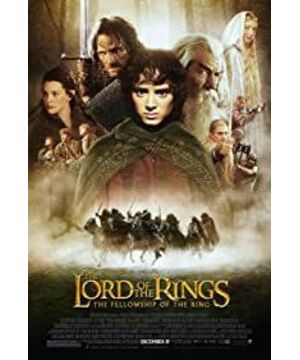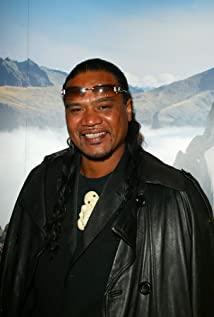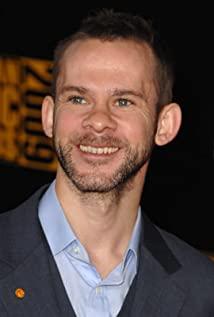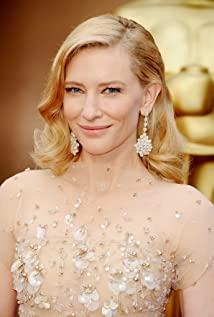Author: 屾
On the 20th anniversary of the release of the first film in the "Lord of the Rings" series, mainland movie fans finally waited for the re-screening of this epic trilogy. 4K restoration film source, IMAX screen blessing, this trip back to Middle-earth is undoubtedly the top version.
However, probably no one would have thought that the one-star bad review on the ticketing platform that attracted the most attention of "Lord of the Rings" in the mainland re-screening was not the film itself.
"A broken ring was given for three hours, and it gave us backaches." "The previous movies are making money again." "Trash movies, there is no ending." "It's not good-looking, it burns brains."
As fans of the "Lord of the Rings" series, we can of course refute these bad reviews one by one, but after thinking about it, we still feel that since "the joys and sorrows of human beings are not interlinked," the movie tastes of different audiences may not necessarily require the same. What's more, the bad reviews on the ticketing platform are only 2% of the total.
A few negative reviews cannot shake the status of the "Lord of the Rings" series in film history, let alone change its five-star genuine praise in the hearts of countless fans.
The "Lord of the Rings" trilogy is a classic in film history, and the various cold knowledge on the scenes and behind the scenes has always been a topic that movie fans talk about.
After consulting countless materials, Fusan summarized the nine knowledge points of "Lord of the Rings" today , and shared them with you who are out of the theater and still reluctant to part with Middle-earth.
-An adapted version of the last century-
The global "Lord of the Rings" trilogy is not the first time its original novel has been adapted into a film and television work.
In 1978, the animated film "Lord of the Rings" directed by Ralph Bakshi was released. Despite mixed professional reviews, it still won the box office of 30.5 million US dollars with a budget of 4 million US dollars.
Peter Jackson , the director of the "Lord of the Rings" trilogy , became interested in Tolkien's original work for the first time because of this animated work.
In the soundtrack of the director’s commentary for "The Lord of the Rings: The Angel of the Ring", Peter also admitted that a set of shots shot with a low-angle view of the Hobbit in the scene at Bilbo’s birthday party was the intentional version of Bakshi’s. "Lord of the Rings" tribute.
In addition to several animated films in the 1970s and 1980s, Finland also filmed a 9-episode miniseries called "The Hobbit" in 1993.
Although the play is called "The Hobbit", there is only one episode of the whole play adapted from "The Hobbit", and the rest of the plot comes from the novel "The Lord of the Rings".
Of course, looking at it from the current perspective, the makeup and special effects at that time were indeed a bit hard to describe, and even a little bit weird.
These are the first four hobbits:
This is Gandalf who looks like Xu Jinjiang:
Gulu is pretty easy to recognize:
-Items rejected by Disney-
Peter Jackson read the original "Lord of the Rings" when he was 18 years old, and at that time he already had the idea to put the story on the screen. In order to achieve this goal, he took one step at a time and made a small-cost film for ten years before he got the opportunity to direct "Lord of the Rings".
In 1997, Harvey Weinstein won the film and television adaptation rights of "The Lord of the Rings", "The Lord of the Rings" was formally approved, and Peter Jackson also began to write the script.
According to Peter the Great's original vision, this project is to be made into a trilogy-the first part is from the novel "The Hobbit", and the second and third parts are the story of the Ring Team destroying the Lord of the Rings.
However, due to a limited budget and the copyright of "The Hobbit" was not fixed, Weinstein had to persuade Peter Jackson to give up filming "The Hobbit" and only shoot two "Lord of the Rings".
Although not very happy, Peter still agreed to the plan. However, as the project moved forward, Weinstein soon discovered that it was still short of money, and not nearly too close. In desperation, Weinstein found Miramax’s parent company, Disney, and the reply from Disney’s executives was very simple:
no.
Without asking for the money, Weinstein had to do Peter Jackson's work again: Or let's stop making two, just make one.
Peter Jackson gritted his teeth and agreed, but his bottom line is: it's okay to make one, but this one will take 4 hours.
Now Weinstein is not happy, and simply gave Peter Jackson an ultimatum: Give you three weeks, and you will bring this project to look for investment.
After repeatedly hitting the wall, Peter Jackson met New Line Pictures. At that time, Robert Shaye, chairman of New Line Pictures, was very optimistic about this project and decided to take a gamble. This time the two sides hit it off right away- if you want to shoot, just shoot the trilogy.
-The most economical epic trilogy-
The initial investment for the "Lord of the Rings" trilogy was 130 million U.S. dollars, and the average budget for one trilogy was only 40 million. In order to save money, Peter Jackson mainly used the following two methods:
1. The trilogy adopts the "back-to-back" (also known as cascading, which means that multiple movies are shot at the same time or consecutively) , which not only saves money, but also saves time.
2. The whole crew went to New Zealand for live shooting.
First, New Zealand’s manpower and material costs are much lower than that of Hollywood, and it can also get relevant subsidies from the local government. Second, it can also save a lot of special effects production costs. (Live shooting is not just to save money. Another important reason is that Peter Jackson believes that since it is an epic, live shooting is necessary!)
As the filming progressed, the total investment of the final trilogy was increased to 281 million, and the average filming cost of one film was about 93 million.
However, this number is still not high for an epic film like "The Lord of the Rings". You know, "Pearl Harbor", which was released in the same year as "The Lord of the Rings", invested 140 million US dollars, and "Harry Potter and the Philosopher's Stone" was 125 million. Anyone who reads it has to say: Peter the Great saves money .
This kind of budgetary skill is not inborn. Don't forget, Peter the Great has been shooting low-cost B-level films for more than ten years before shooting "The Lord of the Rings". In terms of saving money, he is professional.
-A pilgrimage site for fans around the world-
Behind the live shooting is a huge behind-the-scenes team and huge workload.
Taking Shire as an example, the story of "Lord of the Rings" begins with the Hobbit's "happy home". In order to restore the charming and comfortable Shire in the original work, Peter Jackson surveyed the world and finally selected Matamata in New Zealand to start the construction.
In order to show the natural growth of plants in Xanadu, one year before the filming started, the set team began to plant trees, flowers and vegetables. In addition to various types of plants, 37 hobbit caves of various sizes were also built.
After the shooting of "Lord of the Rings", most of the movie sets were demolished, but with the opening of the "The Hobbit" project, the Shire also ushered in reconstruction, this time, it was preserved as a permanent attraction When it came down, it was called "Hobbiton" (Hobbiton). This is also the only scene in the "Lord of the Rings" film series that has been fully preserved.
The happiness of the hobbit is now appreciated by tourists from all over the world.
-Oversized Supreme Lord of the Rings-
Not only is it a set madman, but the "Lord of the Rings" crew is also a prop madman. All kinds of armors, swords, axes, shields, and daily life utensils are all handmade by the staff.
According to statistics, Weta Workshop has produced a total of 48,000 armors, 500 bows and 10,000 arrows. They also made a large number of prostheses, such as 1,800 pairs of hobbit legs, a large number of ears, noses, and heads for actors, and weaving nearly 19,000 pieces of clothing. Each small prop is specially designed by the art team. Considering that it needs to be suitable for scenes with different proportions, many props have also been made in two versions, one large and one small. (Data source: Lord of the Rings Chinese Wiki)
The most important prop in the film is the Lord of the Rings. In order to cope with the shooting of various scenes and various angles, the gold and silversmith Jens Hansen, who provided the props of the Lord of the Rings for the trilogy , produced 40 rings of different sizes and materials, which can be called "Contemporary Sauron".
In addition to the normal-sized rings, some of the rings used in the close-up shots are so large that they are beyond imagination.
In the movie, it looks like this:
But outside the play, its actual ratio is like this:
Like Hobbiton, Jens Hansen’s gold and silver jewelry shop is now a pilgrimage place for fans of the Lord of the Rings. In his shop, you can even customize a supreme lord of the ring exclusively for you.
-The hobbit that is not easy to photograph-
In order to show the height difference of different races in Middle-earth, the crew used many methods.
Long-term shots and shots where the face cannot be clearly seen are mostly shot with stunt actors (special actors and children with dwarfism).
In order to cope with the close-up shooting, the prop group also needs to build scenes of different proportions -except for the different sizes, the rest are exactly the same, such as the large scene when shooting the hobbit, and the small scene when shooting Gandalf.
What about the same frame shots of different races? There are two ways.
The first is to use the perspective principle of near-large, far-small, etc. to "deceive" the viewer's eyes . By adjusting the aperture and depth of field, two people who are close and one far away from the lens can look like they are sitting face-to-face.
This is what the audience sees:
This is the actual distance between the two (the table is also specially made):
However, this method only works when shooting 2D movies. When shooting 3D "The Hobbit", it will no longer work. You can only use the green screen that everyone loves the most .
In "The Hobbit", the scene where Gandalf, the hobbit and the dwarves have a dinner together, seems to be full of joy and laughter. In fact, Sir Ian McLean, who plays Gandalf, is facing the air in the green screen scene. Acting, all rival plays can only be performed by looking at the pictures of other actors.
The dry tofu grandfather who had played the whole life collapsed on the spot, crying and said, "I want to go home."
In order to comfort the old man, the crew deliberately changed the tent where he rested to Middle-earth style, and welcomed him back to Middle-earth after many years.
Of course, if you want to realize the height difference is far more than the above methods, it is not impossible to directly let the actors stand in the pit...
-Director who loves guest appearances-
As a guest fan, Peter Jackson has appeared in the "Lord of the Rings" trilogy :
In "Lord of the Rings: Angel of the Ring", Frodo and a group of hobbits arrived at the inn on a rainy night. At that time, the passer-by who turned to look at them with the carrot was Peter the Great.
In "Lord of the Rings: Two Towers", Peter Jackson played a soldier in the Battle of Helm Valley. He threw a spear and gave the enemy a fatal blow.
He always had to pay it back when he came out. In "The Lord of the Rings 3: The Return of the King", he became the unlucky ghost shot by Legolas on the pirate ship.
Not only the "Lord of the Rings" trilogy, but also the director of the "The Hobbit" trilogy.
In "The Hobbit: An Unexpected Journey," Peter Jackson played a dwarf who hurried past the camera.
In "The Hobbit 2: The Battle of Smaug", he played for the second time as a passerby who loves carrots.
This passerby who has an indissoluble bond with carrot has a name. According to the information on IMDb, Peter Jackson played the same role in "Lord of the Rings 1" and "The Hobbit 2", named Albert Dreary (this role is not in the original book ).
In the last work of the series "The Hobbit: The Battle of the Five Armies", Peter Jackson himself did not appear. But the portraits of Bilbo's parents hung on the wall are based on the images of Peter Jackson (who did not have a beard when he was young) and his wife Fran Wales.
This is not the first time these two portraits have appeared on the scene, they have appeared many times in "Lord of the Rings 1".
One head and one tail, the same two portraits, are probably the affectionate farewell of Peter Jackson and Middle-earth.
-Commemorative tattoo of the Fellowship Team-
To commemorate this trip to Middle-earth, members of the Lord of the Rings Expedition met to get tattoos when the film was filmed. They tattooed the "9" in Elvish language on different parts of the body.
Elijah Wood (Frodo) tattooed on the lower abdomen; Sean Austin (Sam) and Billy Boyd (Pickpin) on the ankles (to commemorate their hardship playing the Hobbit); Orlando Bloom (Legolas) tattooed on the forearm; Ian McLean (Gandalf) and Dominic Monaghan (Melly) both on the shoulder; Sean Bing (Boromir) On the right shoulder; Vigo Mortensen (Aragoon) is on the left shoulder. John Rhys-Davis, who plays Jinli, did not get tattoos, but his stuntman got tattoos instead.
Last June, the cast of "The Lord of the Rings" reunited online, and the actors also showed their tattoos to the camera.
Perhaps it was to emulate the Ring of the Ring team. Later, the five actors (except Mark Ruflow) in the first six-member group of the reunion also had special patterns tattooed on their bodies as a souvenir.
-The unfinished story of Middle-earth-
After the "Lord of the Rings" trilogy and "The Hobbit" trilogy, will there be any follow-up to the story of Middle-earth?
In addition to the "Lord of the Rings" and "The Hobbit" that have been put on the screen, there is actually another book from JR Tolkien's "Middle-earth" series-"The Silmarillion " .
The story of Silmarillion took place in the era before The Lord of the Rings and The Hobbit. Compared with the two previous works, it has a larger format and spans tens of thousands of years. It can be called a middle-earth. Chronicles of the world.
So why is such a magnificent masterpiece not being adapted into a film and television work?
The most direct reason is that Tolkien's son Christopher Tolkien refused to let the shoot.
Christopher has always been dissatisfied with the "Lord of the Rings" series of movies. He believes that the film failed to restore the content of the novel perfectly, and the aesthetic and philosophical nature of the book has not been shown in the film. However, the film and television adaptation rights of "The Lord of the Rings" and "The Hobbit" were sold as early as when JR Tolkien was alive, so even if he is not satisfied, Christopher has nothing to do.
But the Silmarillion is different. This book was compiled and published by Christopher after the death of JR Tolkien. As the actual manager of the Tolkien Heritage Foundation, Christopher learned the lesson of his father's sale of copyrights in his later years, and has always firmly controlled the copyright of the Silmarillion and refused to sell it , and he did not want it to be sold more and more. Entertainment-oriented Hollywood "spoiled".
However, things seem to usher in a turning point in 2017. In this year, the Tolkien Heritage Foundation and Warner, the production company of the "Lord of the Rings" series, reached a settlement on some previous copyright disputes and decided to continue friendly cooperation in the future. Tolkien The Heritage Committee has also begun to sell TV series adaptation rights for novels to film and television production companies including Amazon, Netflix, and HBO.
In November of the same year, Amazon announced that it had bought the TV series adaptation rights of "The Lord of the Rings" for $250 million, and the TV series "The Lord of the Rings" was officially put into production. Later, with the filming of the series, the production cost has risen all the way. According to the latest news, the investment in the first season has reached 465 million US dollars (the highest single-season cost of the soaring "Quan You" is only 100 million US dollars), or it may become history. The most expensive TV series.
It is reported that the story background of the drama version of "The Lord of the Rings" is set in the second era of Middle-earth, which is thousands of years ago when the main story of "The Hobbit" and "The Lord of the Rings" took place. The content of the drama will be the movie. Expansion will tell stories that have never been presented by film and television works before.
According to the time setting of the episode, it is not a dream to see the story in "Silmaranth" on the screen.
The first season of "Lord of the Rings" is expected to be broadcast at the end of this year, and the countdown to return to China will begin.
View more about The Lord of the Rings: The Fellowship of the Ring reviews










